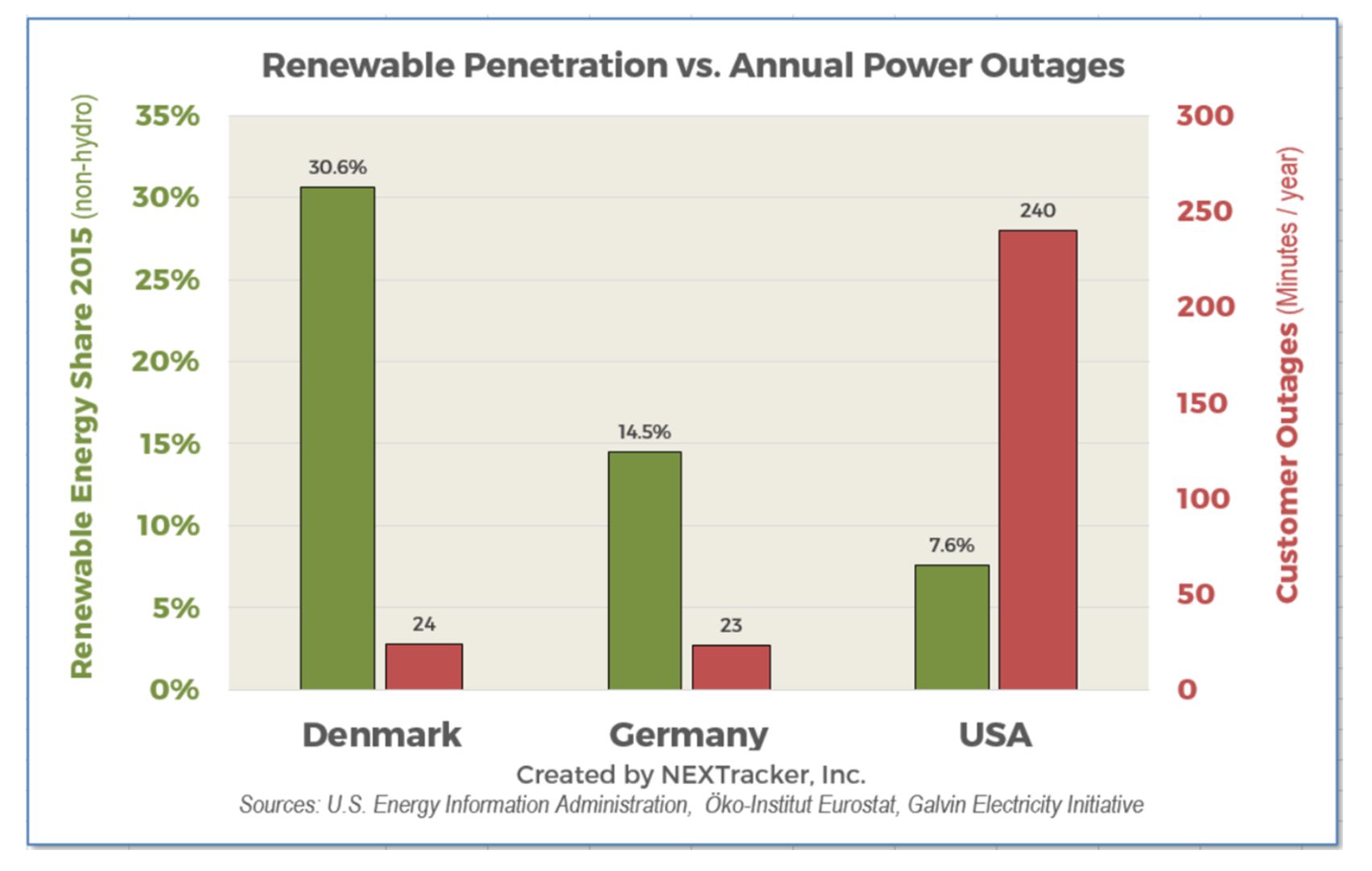In the weeks after Energy Secretary Rick Perry kicked off a 60-day study examining the impact of wind and solar on fossil baseload power plants -- hinting that he might use DOE authority to halt state renewable energy targets -- an army of researchers, grid experts and renewable energy professionals showed up at his doorstep.
They were armed with a deep body of research (including a report from a prominent anti-subsidy libertarian think tank) and real-world experience (including from Perry's home state of Texas) showing that variable renewables aren't the threat to grid reliability that the Energy Secretary implies.
The latest to weigh in: David Hochschild of the California Energy Commission and David Olsen of the California Independent System Operator Board of Governors.
The two prominent energy experts penned an op-ed in the San Francisco Chronicle, calling DOE assumptions about grid reliability "nonsense."
"In California, which has installed more clean energy than any other state, there have been no threats to the reliability of the electric grid caused by renewables. Instead, the three biggest threats to our grid over the last 20 years came from market manipulation (Enron et al., during the 2001 energy crisis), a nuclear plant failure (San Onofre, 2012), and the largest natural gas leak in history (Aliso Canyon gas storage facility, 2015). Rather than create these emergencies, renewable energy was part of the solution and continued to operate reliably and prevented these events from becoming worse," wrote Hochschild and Olsen.
They also look at grid reliability in other countries. Denmark and Germany, which host some of the highest levels of non-hydro renewables in the world, have 10 times fewer minutes of outages each year.
The graph below comes from Dan Shugar, CEO of NEXTracker, who compiled outage data sets back in April.

Shugar posted a response to Perry's assumptions about solar and wind causing grid reliability problems: "Sorry, Secretary Perry, the facts don’t support that."
"We analyzed how the grid reliability, as measured by 'customer outage minutes per year' of countries with the highest renewable penetration (Denmark, Germany) compare with the USA. The result? Germany and Denmark have two to four times the renewables of the USA, but have much more reliable power -- in fact, only 10% of the outages that U.S. customers do," wrote Shugar.
This isn't to say that renewables are the reason for Europe's better outage record. A lack of spending on transmission and distribution infrastructure throughout the 1990s in the U.S. is a major factor in outages. America's vulnerability to hurricanes is another reason. Europe also buries more of its distribution infrastructure, making it less susceptible to weather-related disruptions.
Still, the presence of very high amounts of renewable energy in European countries -- made possible with sophisticated grid management techniques -- does not itself make the grid less reliable.
Hochschild and Olsen echoed Shugar's point in their Friday op-ed.
"What happens when the wind doesn’t blow, or the sun doesn’t shine? To answer that question, one needs to examine the many countries that have more renewable energy than we do. Wind and solar contribute a share 2.5 times larger in Germany’s electricity mix (18.2 percent in 2016) than they do in the United States (6.9 percent). Germany produced 82 percent of its electricity from renewables for a period of several days in May. Denmark gets 100 percent of its electricity from renewables on many days of the year. Yet both nations have electric grids that are 10 times more reliable than America’s. Germany and Denmark average 23 and 24 minutes of customer outages per year, respectively, while the United States averages 240 minutes per year," they wrote.
The DOE study should be released later this week. It's one of the most anticipated reports from the agency in years -- and it'll likely be the most scrutinized, too.



